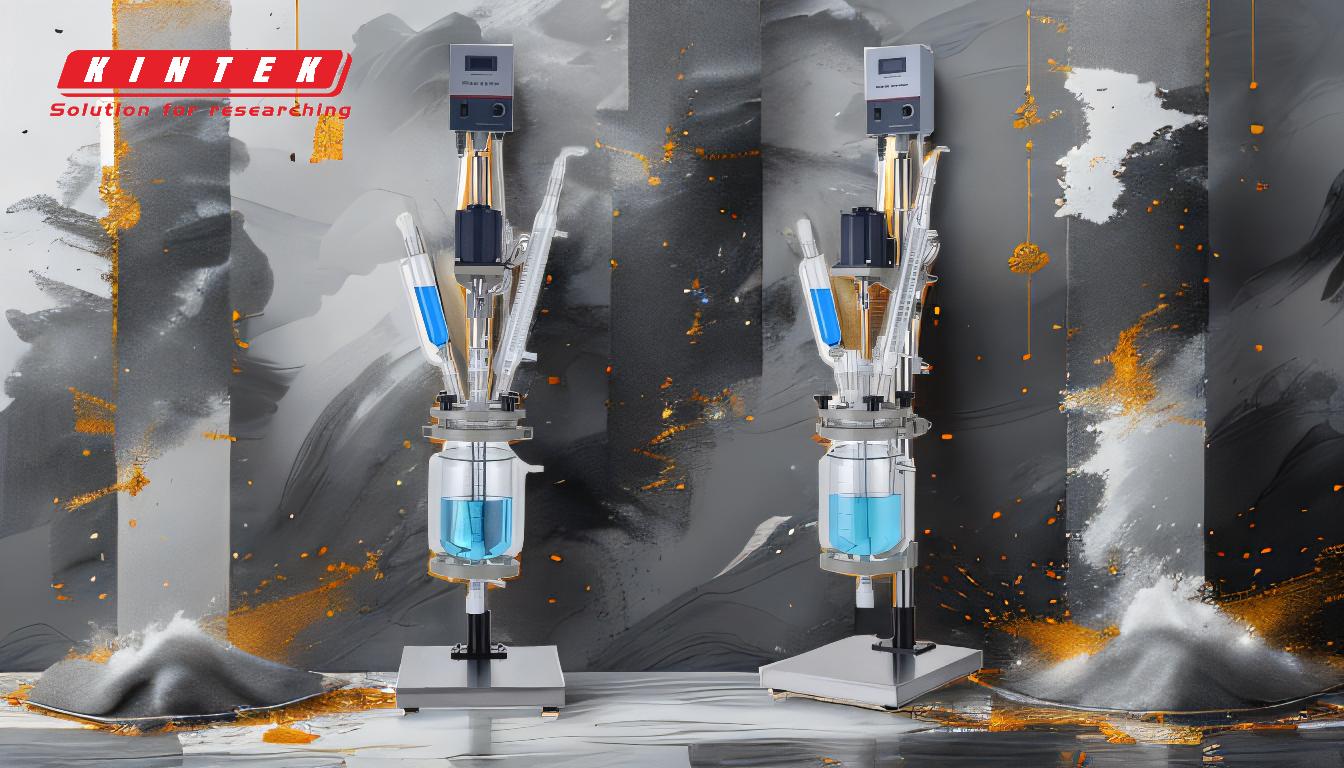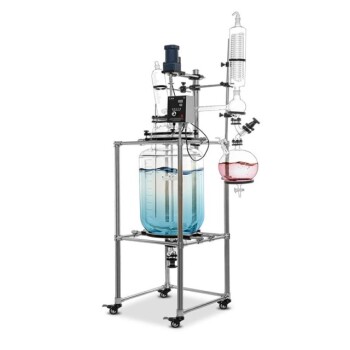A jacketed agitated reactor is a specialized chemical reactor designed for precise temperature control and efficient mixing of reactants. It features a jacket surrounding the reactor vessel, which circulates a heating or cooling medium to regulate the internal temperature. Agitation is achieved through a stirrer or similar mechanism, ensuring uniform mixing of the reaction mixture. This design is particularly beneficial for processes requiring strict temperature control, homogeneous mixing, and scalability. The reactor is often constructed with materials like glass and metal to provide durability, corrosion resistance, and a non-contaminating surface. Its versatility makes it suitable for a wide range of applications in chemical, pharmaceutical, and process industries.
Key Points Explained:

-
Definition and Purpose:
- A jacketed agitated reactor is a type of chemical reactor used to conduct reactions under controlled temperature and mixing conditions.
- It is designed to handle a wide range of chemical processes, including those requiring precise temperature regulation and uniform mixing.
-
Jacketed Design:
- The reactor is surrounded by a jacket that circulates a heating or cooling medium (e.g., water, oil) to control the temperature of the reaction mixture.
- The jacket can be single or double-layered:
- Single Jacket: Circulates liquid around the reactor for temperature control.
- Double Jacket: Includes an inner jacket for liquid circulation and an outer jacket for vacuum insulation, enhancing temperature stability.
-
Agitation Mechanism:
- The reactor is equipped with a variable-speed stirrer or agitator to ensure uniform mixing of the reaction mixture.
- Baffles may be included to improve mixing efficiency and prevent vortex formation.
- Agitation enhances homogeneity in temperature, concentration, and reaction rates.
-
Material Construction:
- The reactor is often made of composite materials, such as glass and metal, to provide:
- Strength: Withstands high pressures and temperatures.
- Corrosion Resistance: Suitable for handling aggressive chemicals.
- Non-Contaminating Surface: Ensures purity of the reaction mixture.
- The reactor is often made of composite materials, such as glass and metal, to provide:
-
Temperature Control:
- The jacket allows for precise temperature regulation by circulating a heat transfer fluid.
- Thermocouples or temperature sensors are placed at key points to monitor and maintain the desired temperature.
- This feature is critical for reactions sensitive to temperature fluctuations.
-
Operational Flexibility:
- The reactor can operate in batch or continuous modes:
- Batch Process: Reactants are added at the start, and products are collected after the reaction is complete.
- Continuous Process: Reactants are continuously fed, and products are continuously withdrawn, enabling large-scale production.
- Features like modifiable overflow and quick-release connections enhance operational efficiency.
- The reactor can operate in batch or continuous modes:
-
Benefits:
- Improved Temperature Control: Ensures consistent reaction conditions and higher product quality.
- Efficient Mixing: Enhances reaction rates and uniformity.
- Scalability: Allows for easy scale-up from lab to industrial production.
- Space-Saving Design: Compact and efficient use of space.
- Leak-Free Operation: Reduces the risk of contamination and ensures safety.
- Chemical Resistance: Suitable for a wide range of chemicals and reactions.
- Automation Compatibility: Can be upgraded for automated control and monitoring.
-
Applications:
- Widely used in industries such as:
- Pharmaceuticals: For drug synthesis and formulation.
- Chemicals: For polymerization, crystallization, and other chemical processes.
- Food and Beverage: For mixing and heating/cooling processes.
- Research and Development: For optimizing reaction conditions and scaling up processes.
- Widely used in industries such as:
-
Key Components:
- Stirring Mechanism: Ensures uniform mixing and heat distribution.
- Dosing System: Allows precise addition of reactants or additives.
- Sampling Ports: Enable monitoring of reaction progress.
- Cooling/Heating Jacket: Provides temperature control.
- Thermocouples: Monitor temperature at critical points.
-
Reliability and Consistency:
- The design ensures reliable and consistent results, making it ideal for scaling up reactions and increasing yields.
- Enhanced temperature control and mixing lead to improved product quality and process efficiency.
In summary, a jacketed agitated reactor is a versatile and efficient tool for conducting chemical reactions under controlled conditions. Its design, combining a jacketed vessel with an agitation mechanism, ensures precise temperature regulation, uniform mixing, and scalability, making it indispensable in various industrial and research applications.
Summary Table:
| Feature | Description |
|---|---|
| Jacketed Design | Single or double-layered jacket for precise temperature control. |
| Agitation Mechanism | Variable-speed stirrer with baffles for uniform mixing. |
| Material Construction | Glass and metal for durability, corrosion resistance, and non-contaminating use. |
| Temperature Control | Heat transfer fluid circulation with thermocouples for monitoring. |
| Operational Modes | Batch or continuous processes for flexibility. |
| Applications | Pharmaceuticals, chemicals, food and beverage, and R&D. |
Enhance your chemical processes with a jacketed agitated reactor—contact our experts today to learn more!











